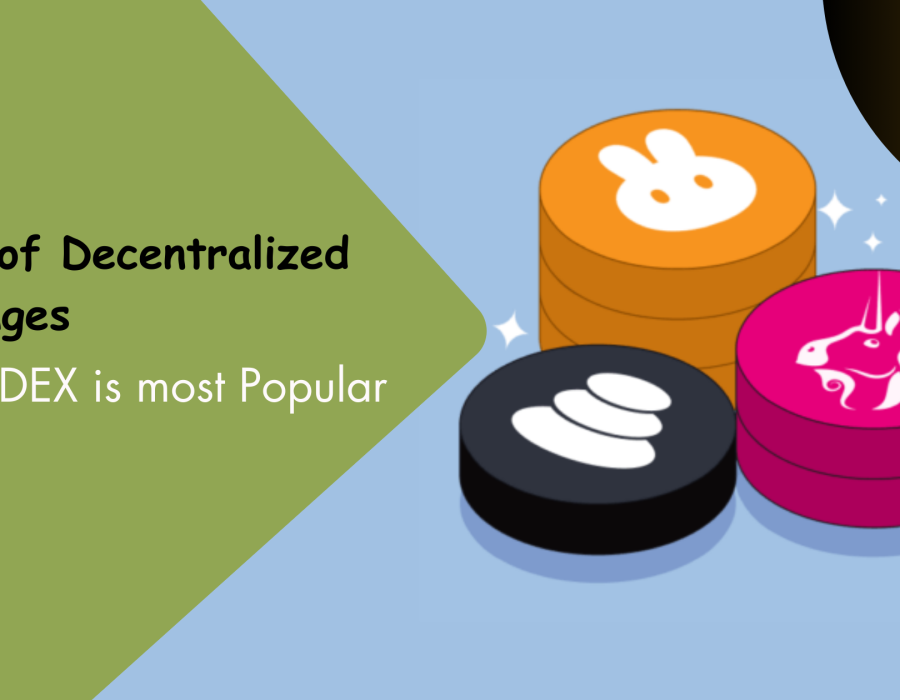Decentralized exchanges (DEXs) have become a cornerstone in the ever-evolving landscape of cryptocurrency trading. With the rise of blockchain technology, these platforms offer users a secure and trustless environment to trade digital assets. In this blog post, we will delve into the various types of decentralized exchanges and explore which ones have gained the most popularity in the crypto community.
Automated Market Makers (AMMs):
Automated Market Makers, commonly known as AMMs, have gained immense popularity due to their innovative approach to liquidity provision. Platforms like Uniswap, PancakeSwap, and SushiSwap operate as AMMs, allowing users to trade directly from their wallets. Liquidity providers contribute to liquidity pools, earning fees in return. Uniswap, with its user-friendly interface and early adoption, has become a household name in the decentralized exchange space.
Order Book-Based DEXs:
Traditional centralized exchanges use order books to match buy and sell orders. Similarly, decentralized exchanges like 0x and Kyber Network utilize order book models to facilitate trading. These exchanges allow users to place limit and market orders, providing a familiar experience for those transitioning from centralized platforms. The efficiency of order book DEXs lies in their ability to offer instant trades and competitive pricing.
DEX Aggregators:
DEX aggregators like 1inch and Matcha take a unique approach by sourcing liquidity from multiple decentralized exchanges. These platforms scan various DEXs to find the best prices for users, optimizing trades and reducing slippage. DEX aggregators have gained popularity for their ability to provide users with the best possible deal by tapping into a network of decentralized liquidity sources.
Layer-2 DEXs:
Scalability has been a significant concern for decentralized exchanges due to high gas fees and slow transaction times on the Ethereum network. Layer-2 solutions like Loopring and zkSwap aim to address these issues by conducting transactions off-chain or through sidechains. These Layer-2 DEXs offer faster and more cost-effective trading experiences, gaining traction as Ethereum scalability solutions gain momentum.
Cross-Chain DEXs:
Interoperability is a key focus in the decentralized exchange space, leading to the emergence of cross-chain DEXs. Platforms like Thorchain and Polkadot's decentralized exchange bridges enable users to trade assets across different blockchains seamlessly. Cross-chain DEXs cater to the growing need for fluidity between various blockchain ecosystems, allowing users to diversify their portfolios without the need for centralized intermediaries.
End Words
As the decentralized exchange landscape continues to evolve, each type of DEX brings its unique advantages to the table. The most popular decentralized exchange often depends on individual preferences, trading strategies, and the specific needs of users. Whether it's the simplicity of AMMs, the familiarity of order book models, the efficiency of DEX aggregators, the scalability of Layer-2 solutions, or the interoperability of cross-chain DEXs, the decentralized exchange ecosystem offers a diverse array of options for crypto enthusiasts. Choosing a decentralized exchange development company is a pivotal decision for those seeking to enter the dynamic world of blockchain and cryptocurrency trading.
Contact our Experts Today:
See our Portfolio: https://rb.gy/0342g
Skype - live:62781b9208711b89
Email Id - [email protected]
Telegram - https://telegram.me/Clarisco
Book a Free Demo - https://rb.gy/rzcdrp





Comments